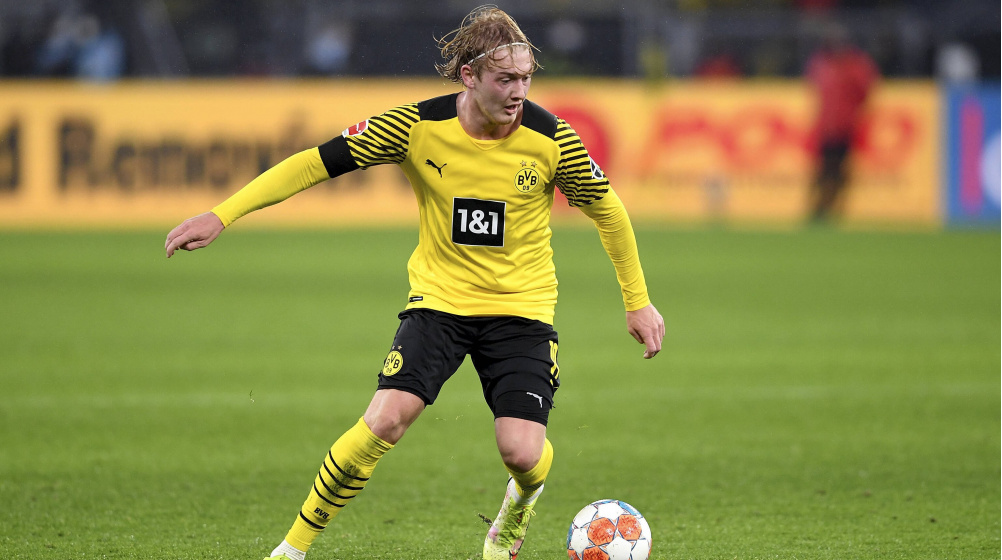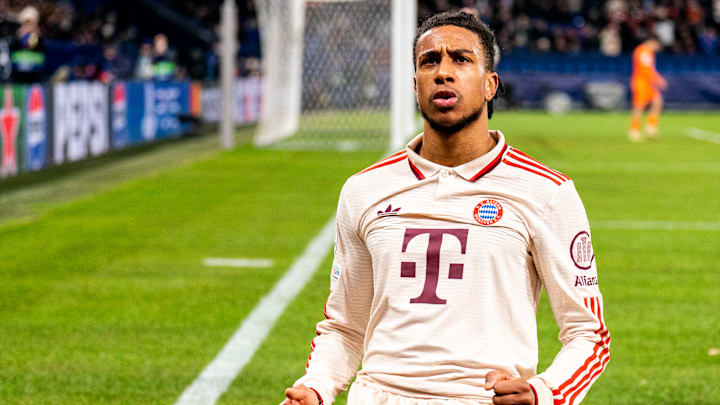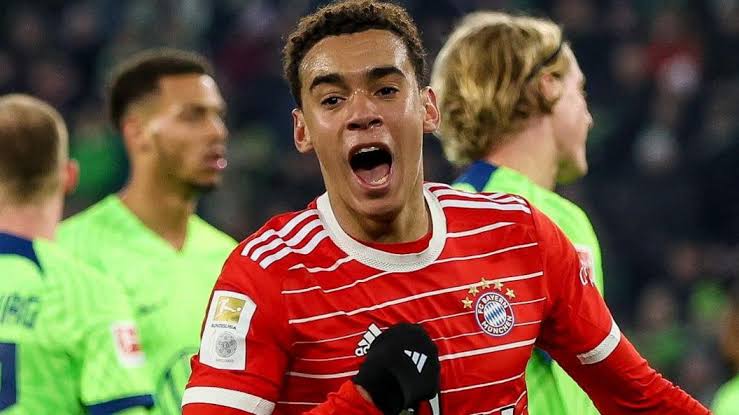Germany’s 2025 football season has put midfielders in the spotlight. They still decide how fast and stressful the Bundesliga is. Germany has produced some of the best playmakers, defensive anchors, and aggressive midfielders in the world. These players are changing the way the game is played. This is because this year it is the most challenging league in Europe. Fans are always looking for the best midfielders in Germany, the best midfielders in the Bundesliga, and the next big players who could win both the German and foreign titles. From Munich to Leverkusen to Leipzig, the middle has become the real key to success.
This year, players in the middle are responsible for more than just keeping the ball. They need to be able to change their strategy and move the ball around the field. They also start charges and set the pace. In 2025, Germany is making midfielders who are creative, technically skilled, and good at defense in a way that makes people all over the world take notice. The 10 best midfielders in Germany on this list are in good shape, play consistently, and make an effect on the field. There are a lot of people who follow German football, play fantasy football, and are looking for midfielders. This list has the most talked about and looked for midfielders in the country. This is proof that the Bundesliga is still a great place for top players to play and that midfielders are still the most important position in football in 2025.
Top Ten Best Midfielders In Germany (2025)
10. Tom Bischof — Bayern Munich

Tom Bischof arrived on the scene as a composed central midfielder who blends intelligent positioning with an eye for forward movement. Comfortable receiving between lines, he regularly opens passing lanes and draws pressure away from teammates so wider attackers find room to operate. His left foot offers accurate line breaking passes and the kind of measured through balls that accelerate attacks without forcing the issue. Bischof’s pressing sense and ability to win loose balls give coaches tactical flexibility when switching from structured build up to quicker counter moves. At the same time he reads transitions well, stepping into half spaces to take second balls and recycle possession. For teams that prize ball progression and possession control he represents a modern midfield blueprint, combining steady defensive contribution with a growing creative spark. His trajectory points toward a midfield profile that can both protect the back four and add to chance creation, and his profile is now widely tracked as a young midfield talent making waves in the Bundesliga.
9. Julian Brandt — Borussia Dortmund

Julian Brandt provides a calming creative spine where final third invention meets practical distribution. He has a natural rhythm for orchestrating possession that helps teams move from midfield density into danger zones without losing structure. Brandt’s passing range includes smart short combinations to unpick compact blocks and the occasional lofted pass that changes angles quickly. His off the ball movement creates passing lanes for central partners while his timing into the box adds a scoring threat beyond simple assist metrics. Defenders find him difficult to pin down because he can play on the left or centrally and adapt his role from creator to late arriving goal threat. In systems that require midfielders to both unlock defences and help maintain territorial advantage, Brandt stands out for marrying technical subtlety with consistent output. Recent match influence numbers back up his impact in decisive sequences and in the final third supply channel where chance creation matters most.
8. Angelo Stiller — VfB Stuttgart

Angelo Stiller brings a composed midfield temperament to every match he plays. He is strong in recovery runs, able to cover ground while keeping his passing simple and accurate under pressure. Stiller’s role is often to provide the platform from which creative midfielders can flourish by offering balanced support in defensive phases and composed distribution in possession play. When the game demands controlled tempo he can slow the action with safe switches or pick a progressive pass to move the ball into advanced channels. His tackling timing is measured rather than reckless, and his reading of when to step in or stay compact helps reduce the frequency of dangerous free transitions. Clubs that need a midfield figure who can hold shape, protect the back line and still help in progressive build up value Stiller for his steady influence and his understated but consistent match to match performance.
7. Aleksandar Pavlović — Bayern Munich

Aleksandar Pavlović has emerged as a defensive midfield anchor who blends calm control with impressive athletic reach. Comfortable in tight spaces, he keeps possession moving while also offering immediate physical presence when the opposition tries to force errors. Pavlović shows a knack for intercepting direct passing lanes and turning defence into attack with measured outlet passes that relieve pressure and invite forward momentum. He has the kind of spatial awareness that allows him to cover for overlapping full backs and still retain a positional base for the team. For managers who prize a midfield pivot that can protect the penalty area and initiate efficient ball progression, Pavlović’s profile is especially attractive. He balances shielding duties with a growing confidence to step into passing sequences that break opposition lines without sacrificing defensive shape.
6. Exequiel Palacios — Bayer Leverkusen

Exequiel Palacios combines combative work rate with an ability to move the ball quickly through congested midfield zones. He excels at transitional moments where the play flips from defence to attack, using quick passes and early forward drives to give Leverkusen an immediate outlet. Palacios is strong at winning second balls and his timing in tackles helps the team regain possession in dangerous areas. Equally important is his decision making under pressure, which reduces turnovers close to his own box and allows more creative teammates to operate higher up the pitch. In roles where ball recovery and compact pressing are required, Palacios stands out as a modern midfield presence who contributes both to defensive stability and to direct attacking thrusts in open play. His work in the centre helps maintain a consistent tempo while supporting a high intensity press model that many Bundesliga teams use to unsettle opponents.
5. Xavi Simons — RB Leipzig

Xavi Simons is a midfield profile built on direct creativity and sharp movement inside the final third. He uses dribbling and quick one touch interplay to destabilize compact defences and create pockets of space for team mates to exploit. Simons reads when to drive at defenders and when to thread a narrow pass that splits opposing lines, giving him high value as an attacking midfielder operating between the last defender and defensive midfield layers. He is also adept at producing decisive moments from set plays and from fast positional rotations where his timing into the box can convert half chances into real opportunities. For teams that want an offensive spark through midfield creativity, his combination of pace, close control and finishing awareness provides a consistent attacking vector. Match to match his ability to find or make space is often the mechanism that transforms possession into clear cut chances.
4. Michael Olise — Bayern Munich

Michael Olise brings a modern attacking midfield energy that merges fluent dribbling with measured final ball quality. He operates effectively from the right or centrally, linking wide attacking phases with central penetration through intelligent passing choices. Olise reads the rhythms of quick counters and works well in systems that want tempo and verticality when transitioning into attack. His crossing and low driven passes into the six yard box complement a clever late arrival into scoring positions, which forces defenders to account for multiple attacking threats. He is also effective in tight pockets where ball control and immediate vision determine whether an attack will end in a shot or a recycled sequence. For teams chasing decisive assists and consistent creative production, his presence raises expected output in the last third through a mixture of inventive combinations and high quality chance creation.
3. Leon Goretzka — Bayern Munich

Leon Goretzka offers a rare mix of physical power, finishing instinct and midfield intelligence. His ability to carry the ball from deep into scoring positions makes him a consistent source of late runs and second phase goals. Tactical versatility sees Goretzka move between holding roles and advanced offensive support depending on match needs, and his strength on the ball helps him retain possession in contested areas. He also contributes to aerial danger on set pieces and offers a scoring threat that compliments the main creative outlets in his team. Coaches value his leadership on the pitch because he applies pressure in key moments and times his forward surges expertly to align with wide overloads. In a league that values dynamic midfielders who add goals to supply, Goretzka remains a premium blueprint for the modern central midfielder.
2. Joshua Kimmich — Bayern Munich
Joshua Kimmich remains the midfield metronome who blends distribution precision with defensive clarity. His passing range covers neat short lay offs to accurate long passes that switch play and create forward angles for attackers. Kimmich’s tactical intelligence shows in his ability to read opponent movement and position himself to cut passing lanes while still being available to start attacking sequences. When required he drops deeper to shield his full backs and when the game opens he steps forward to link play with creative midfield colleagues. His discipline and consistent match influence make him the stabilizing axis in systems that rely on both possession retention and frequent progressive passing. Kimmich’s presence also helps younger teammates understand tempo control and positional discipline in demanding match moments.
1. Jamal Musiala — Bayern Munich

Jamal Musiala occupies the number one spot because of his blend of technical mastery, balance and sudden threat in the final third. He slips through tight spaces with a low centre of gravity and an ability to bypass multiple defenders with a single touch or a quick change of direction. Musiala’s decision making in advanced positions is mature beyond his years, choosing the pass that creates the highest quality chance while still carrying a consistent goal threat himself. He links play between midfield and attack with seamless combinations and his dribbling sequences often draw multiple defenders, which opens lines for team mates to exploit. In phases where creative play and chance creation determine outcomes he is the central spark, turning midfield momentum into shots on target and meaningful attacking sequences. For clubs looking for an attacking midfielder who can both create and score he represents the modern attacking playmaker at its most efficient.


